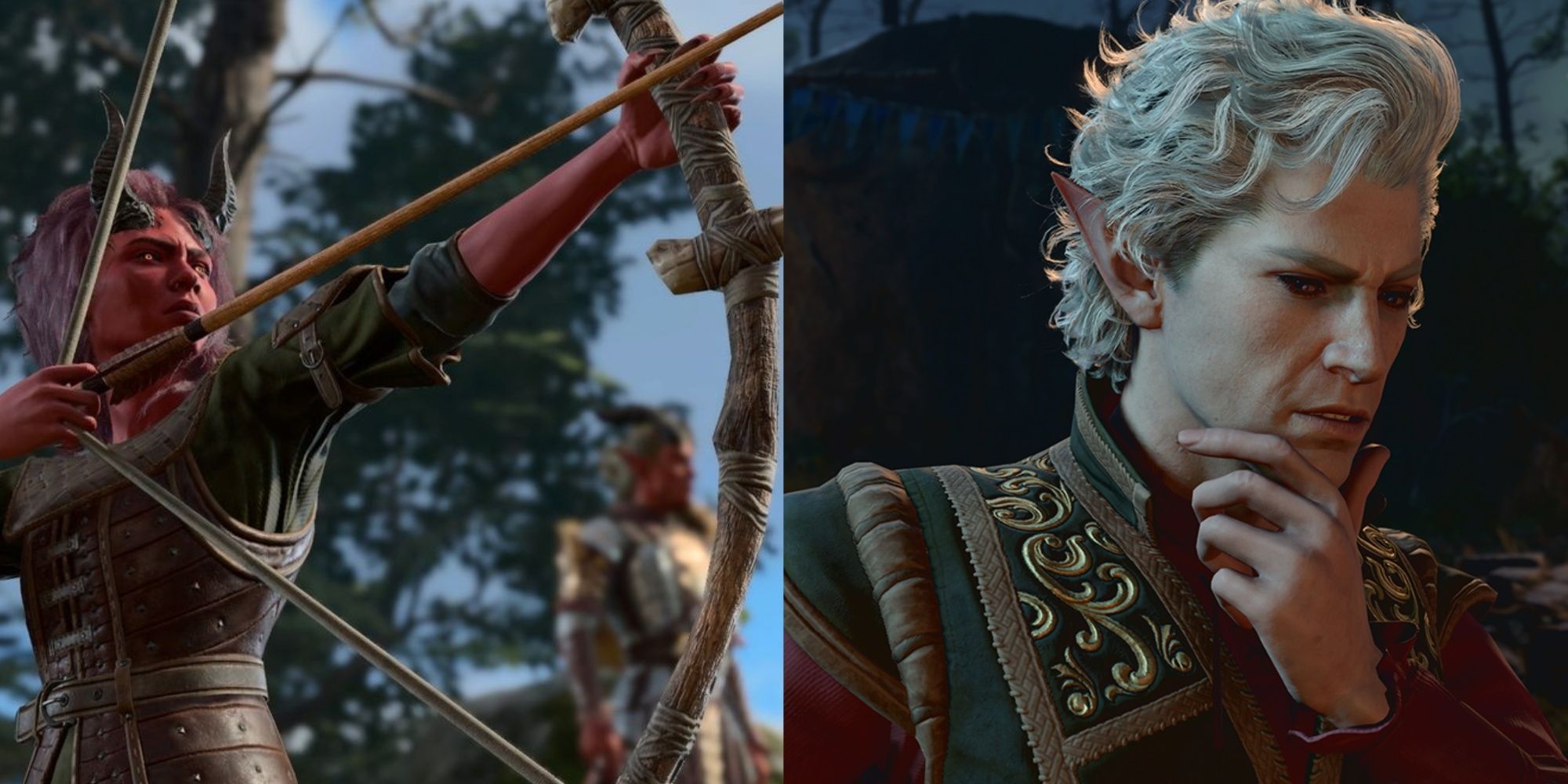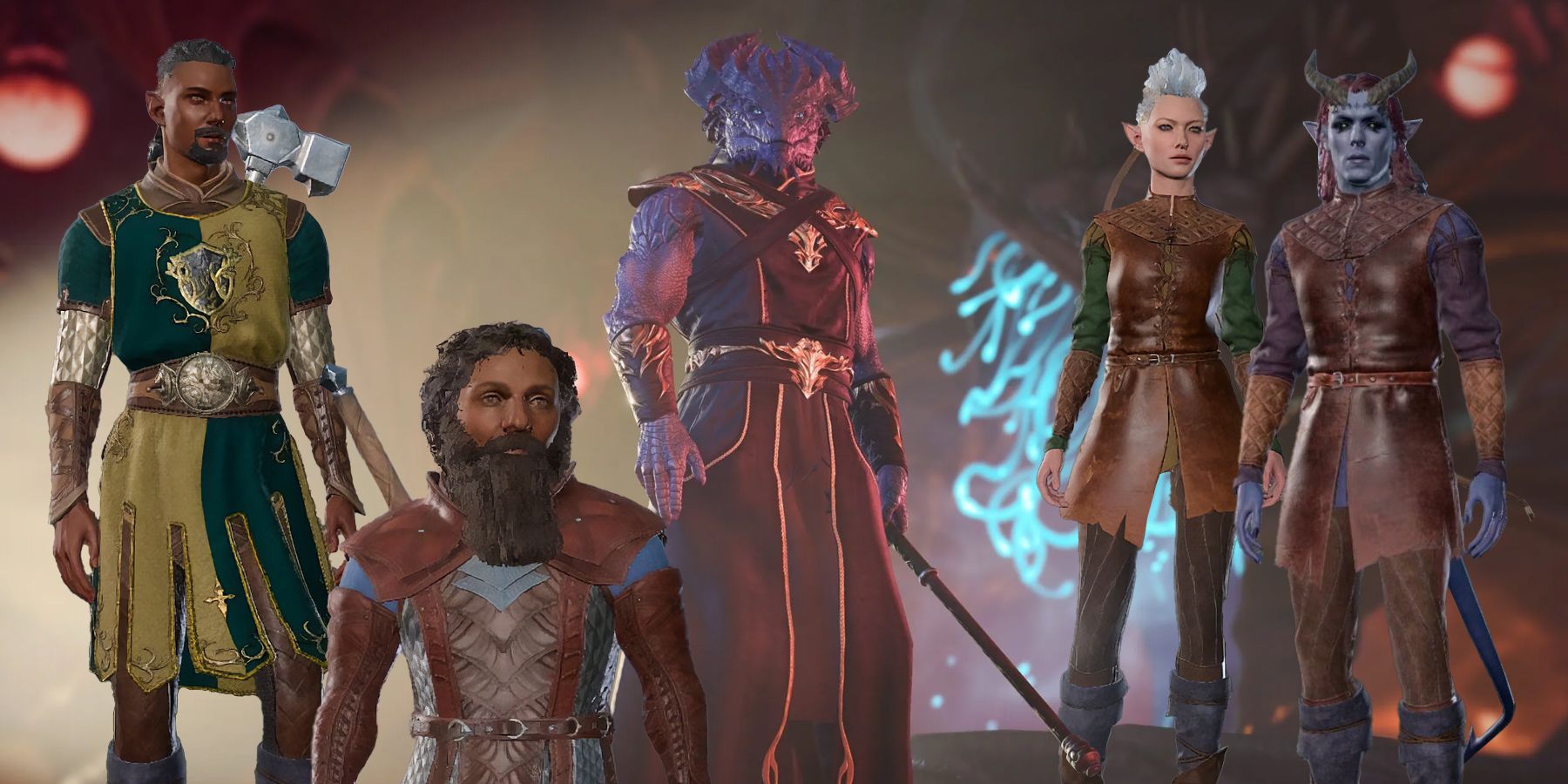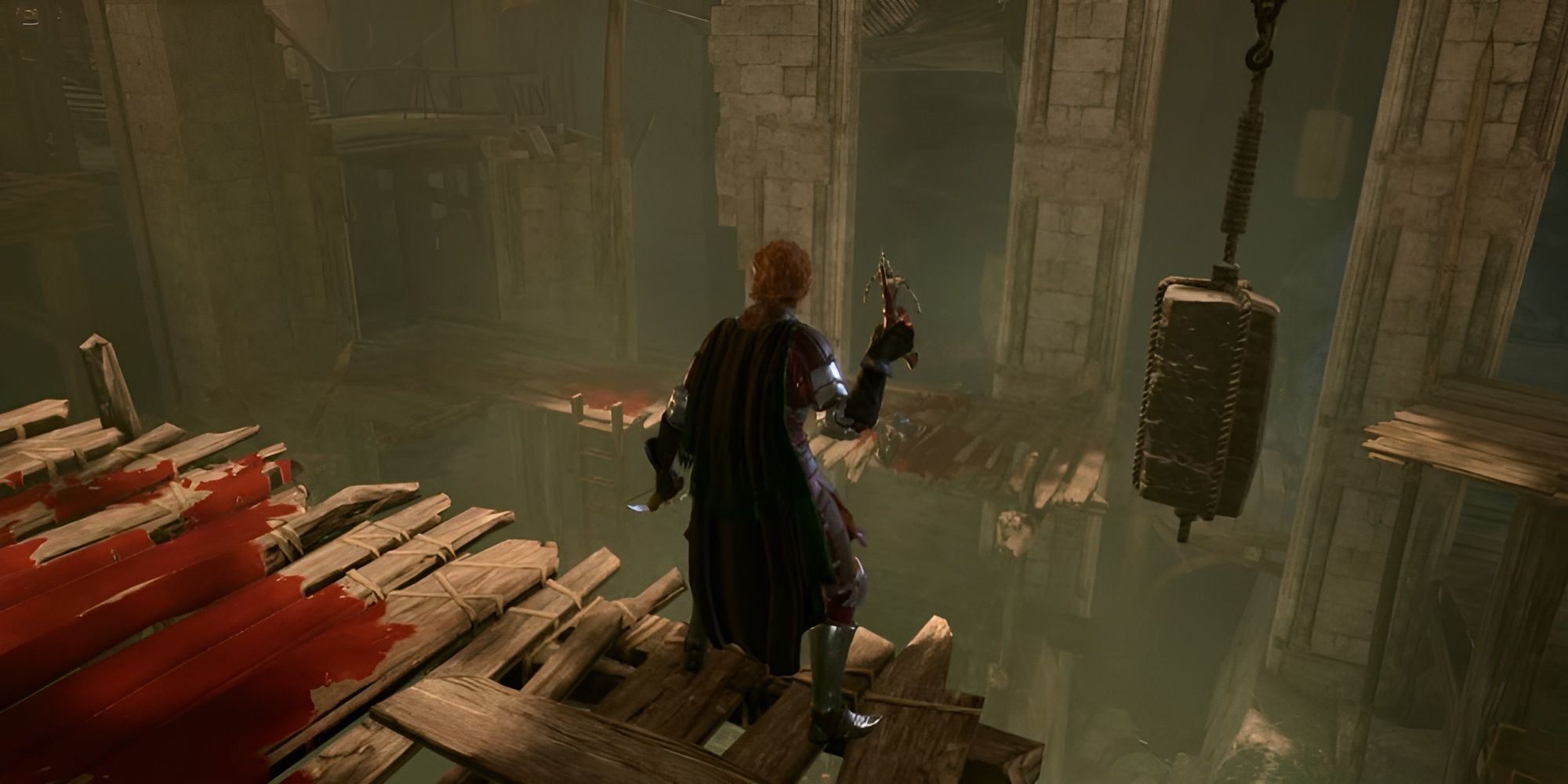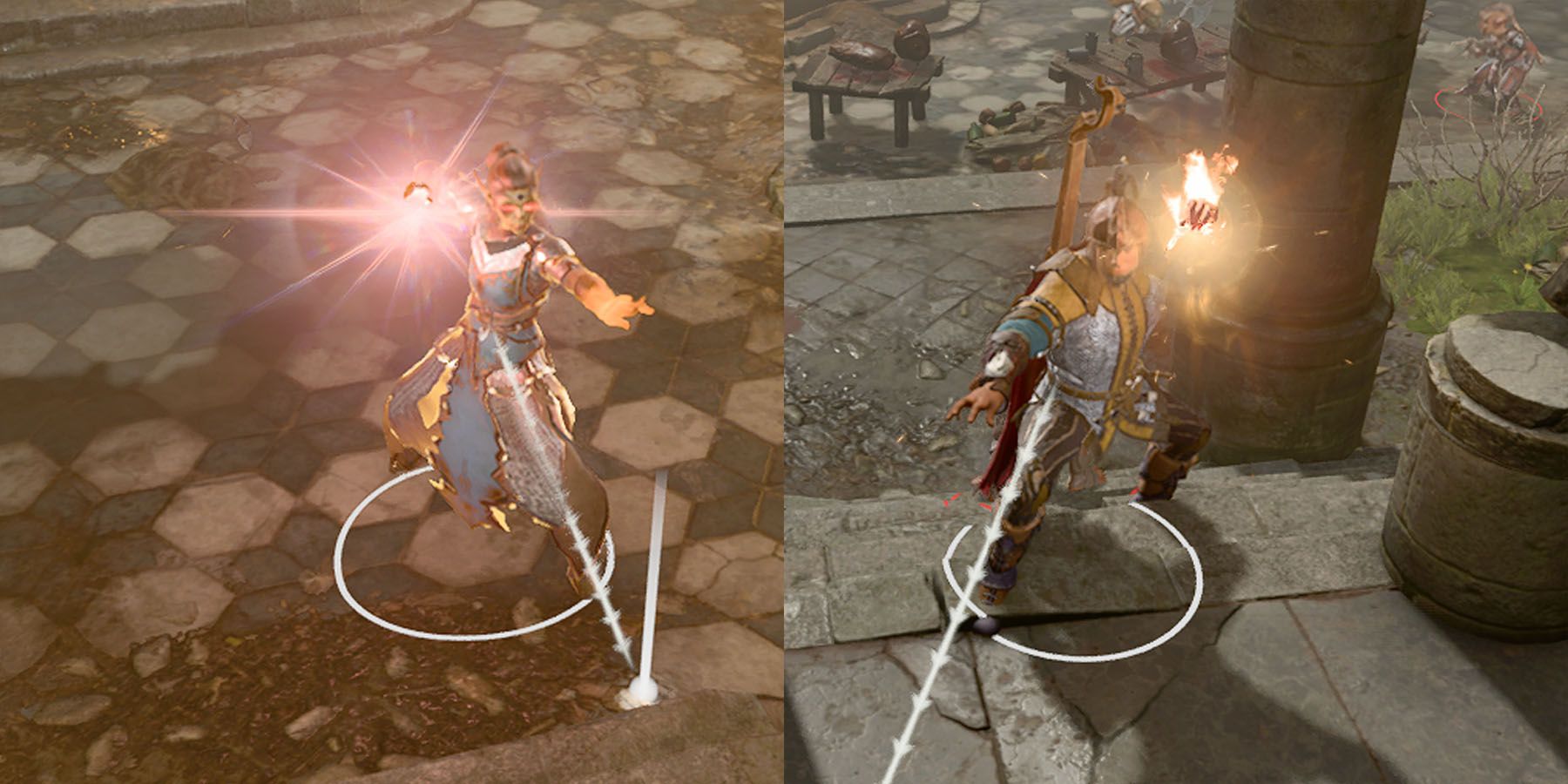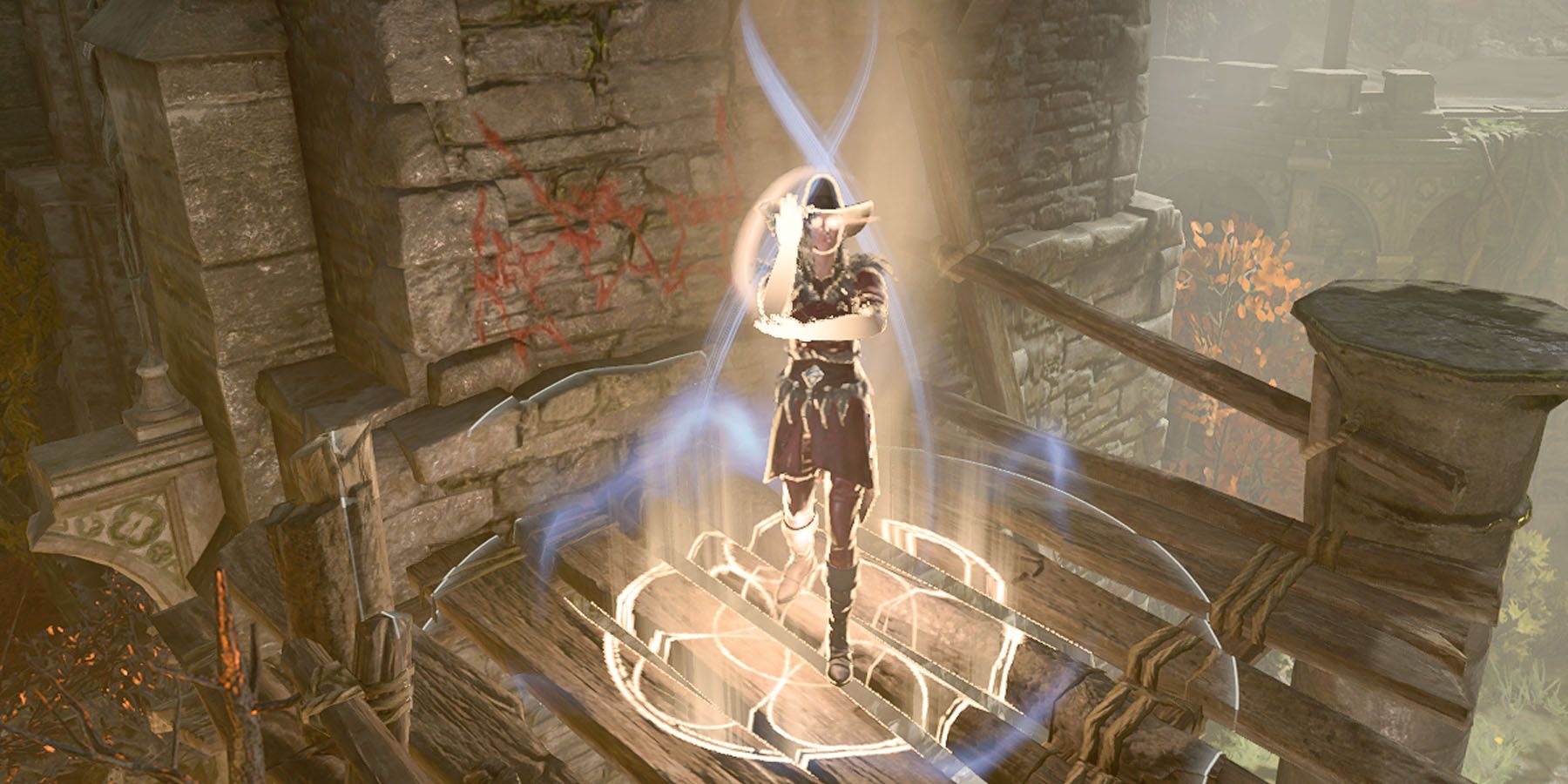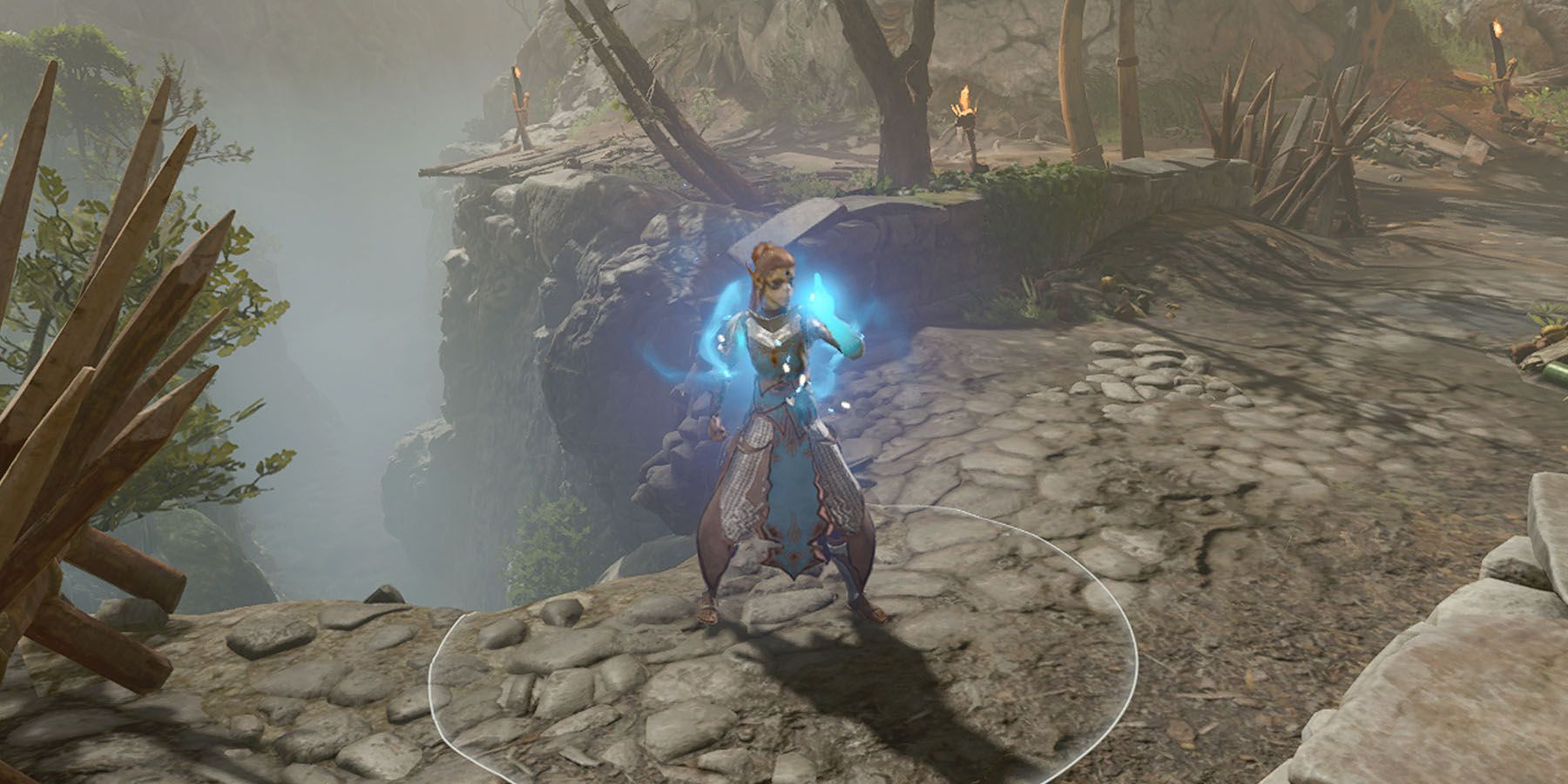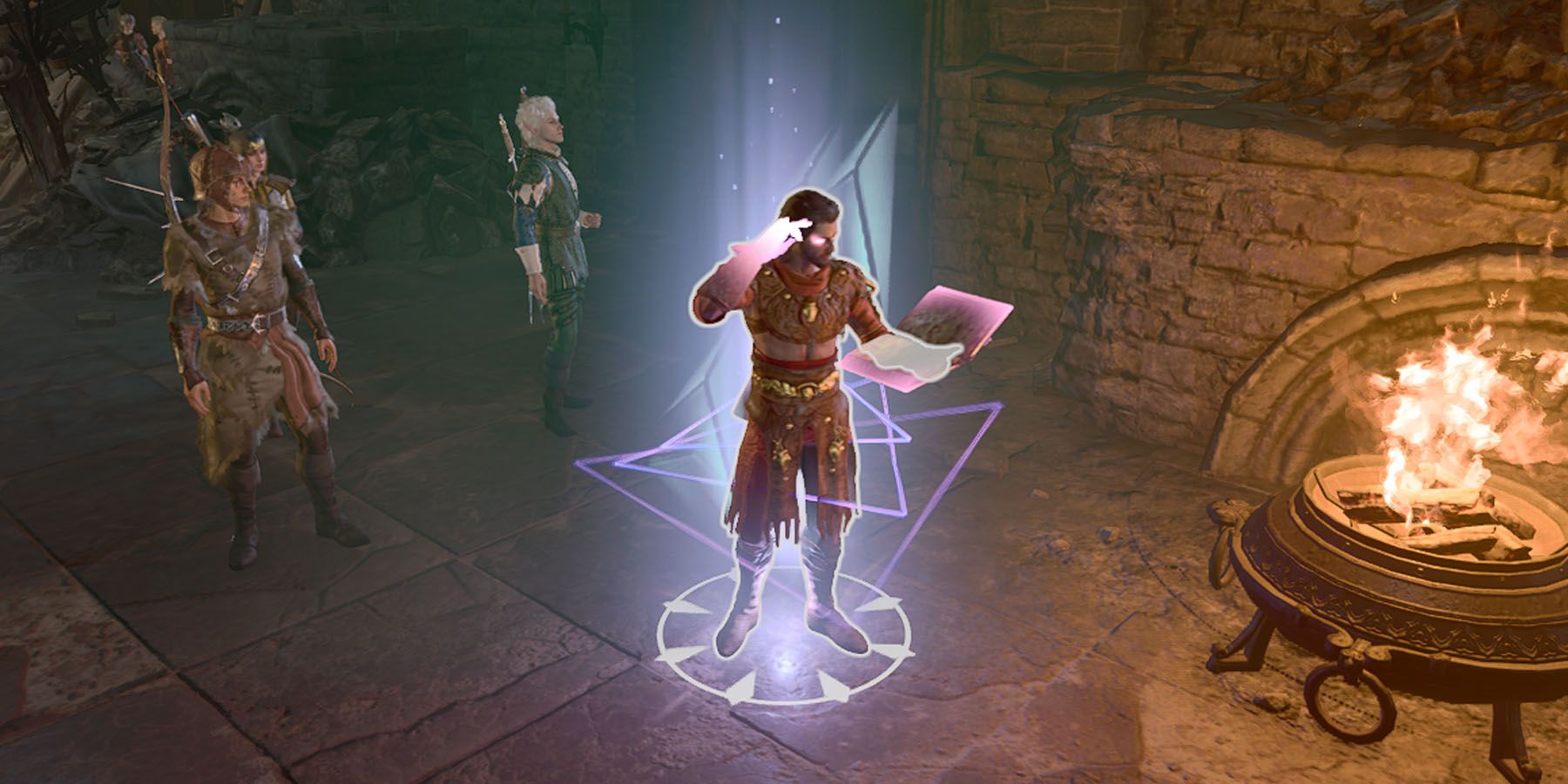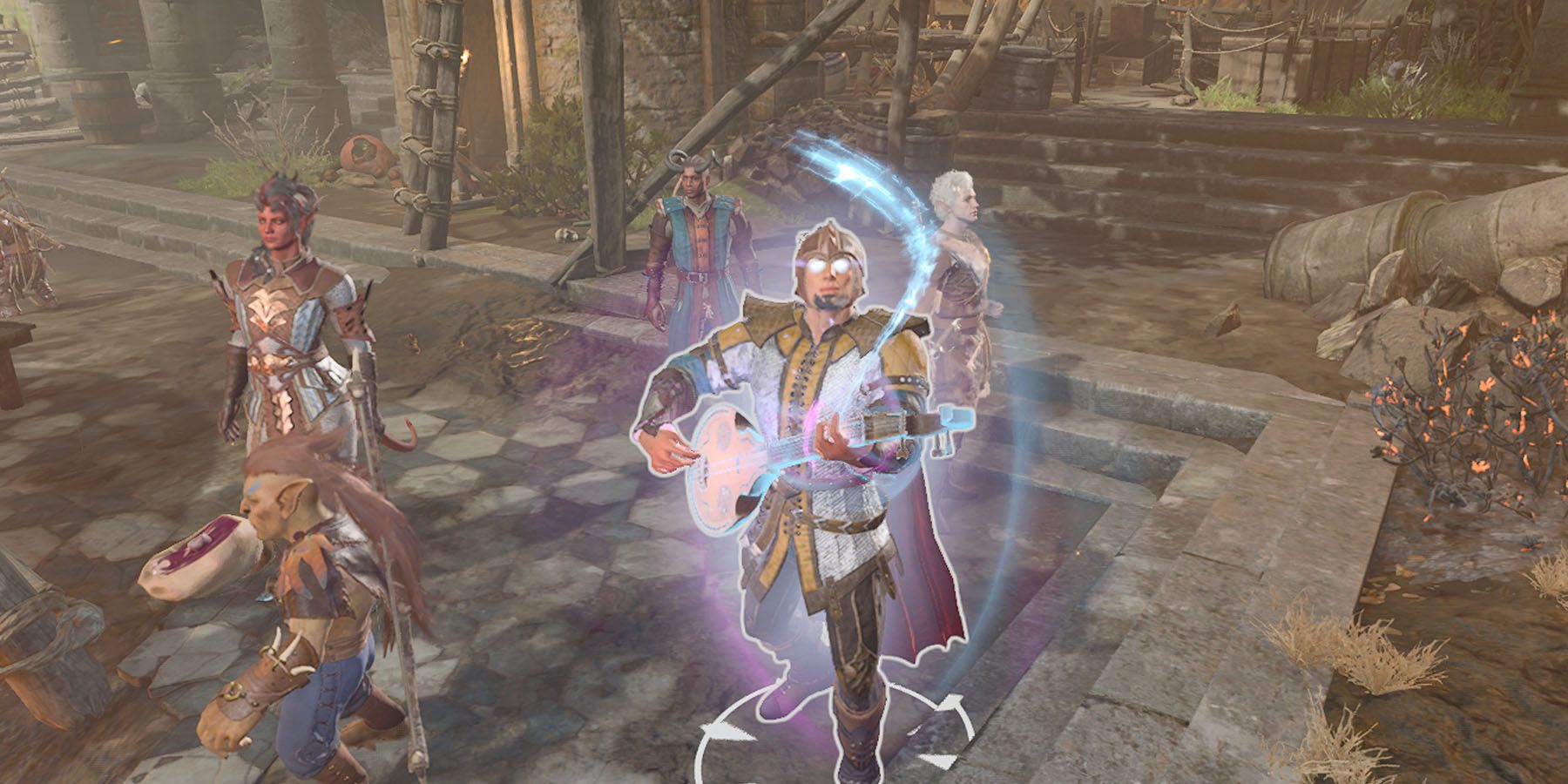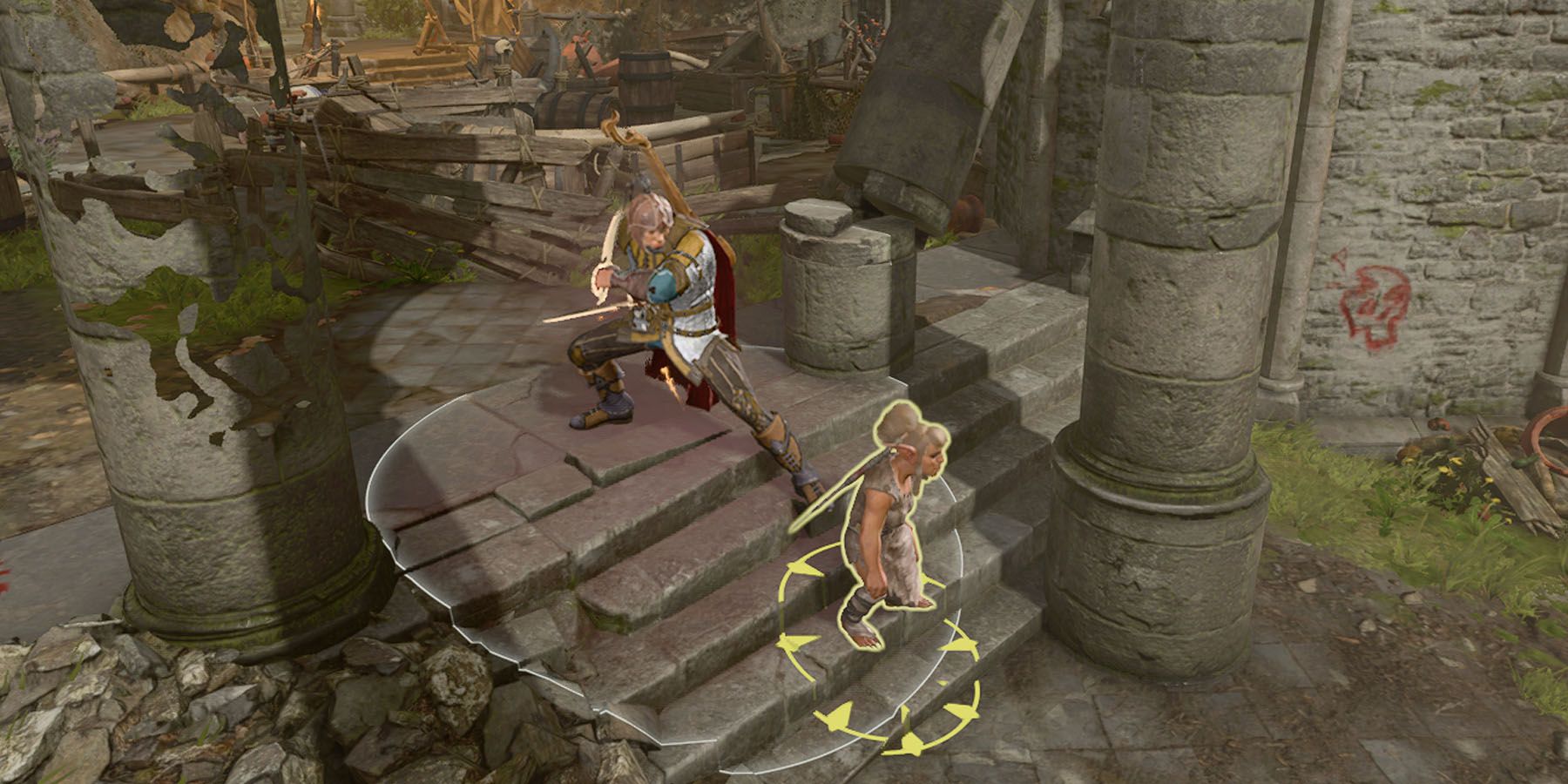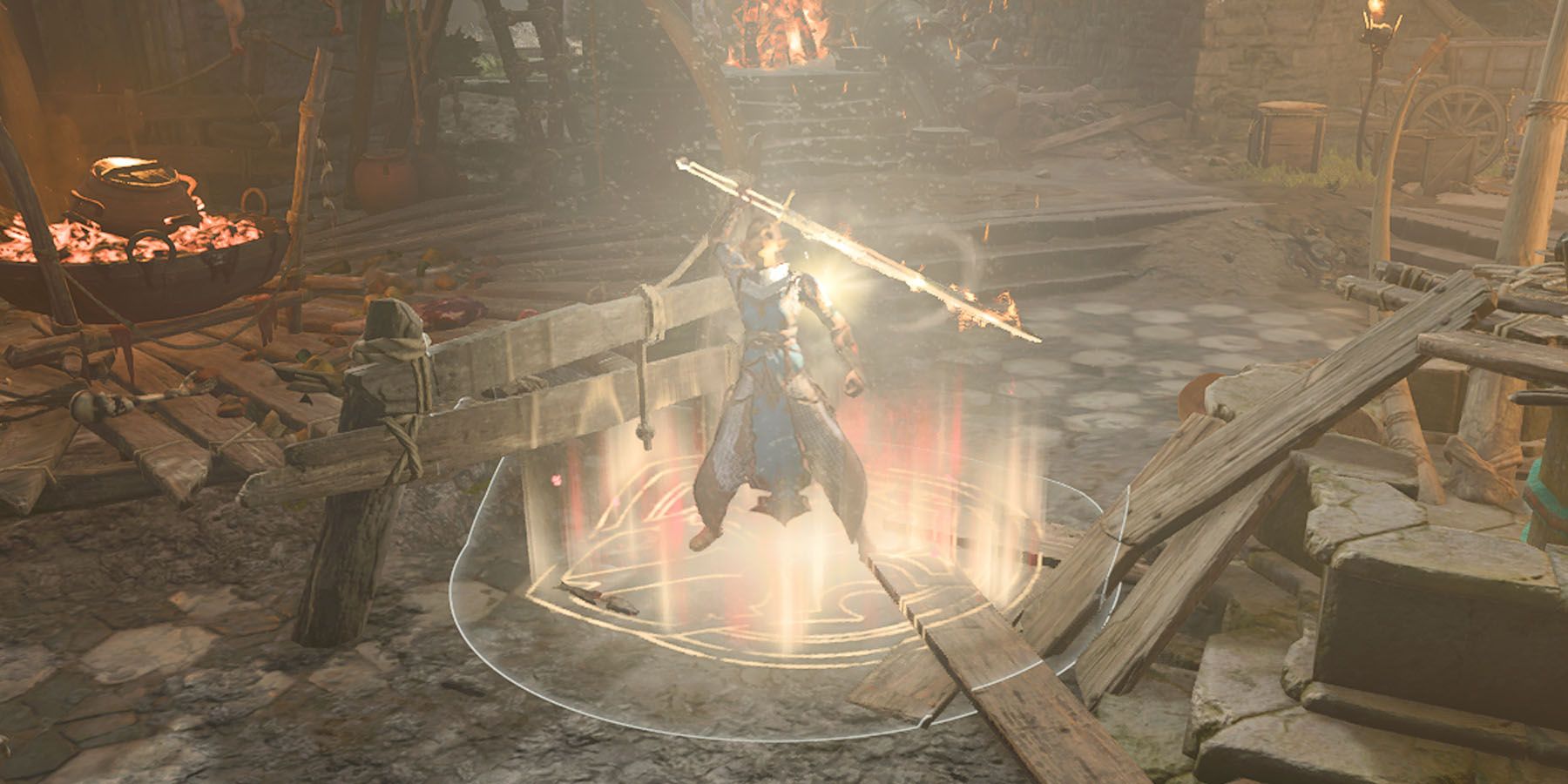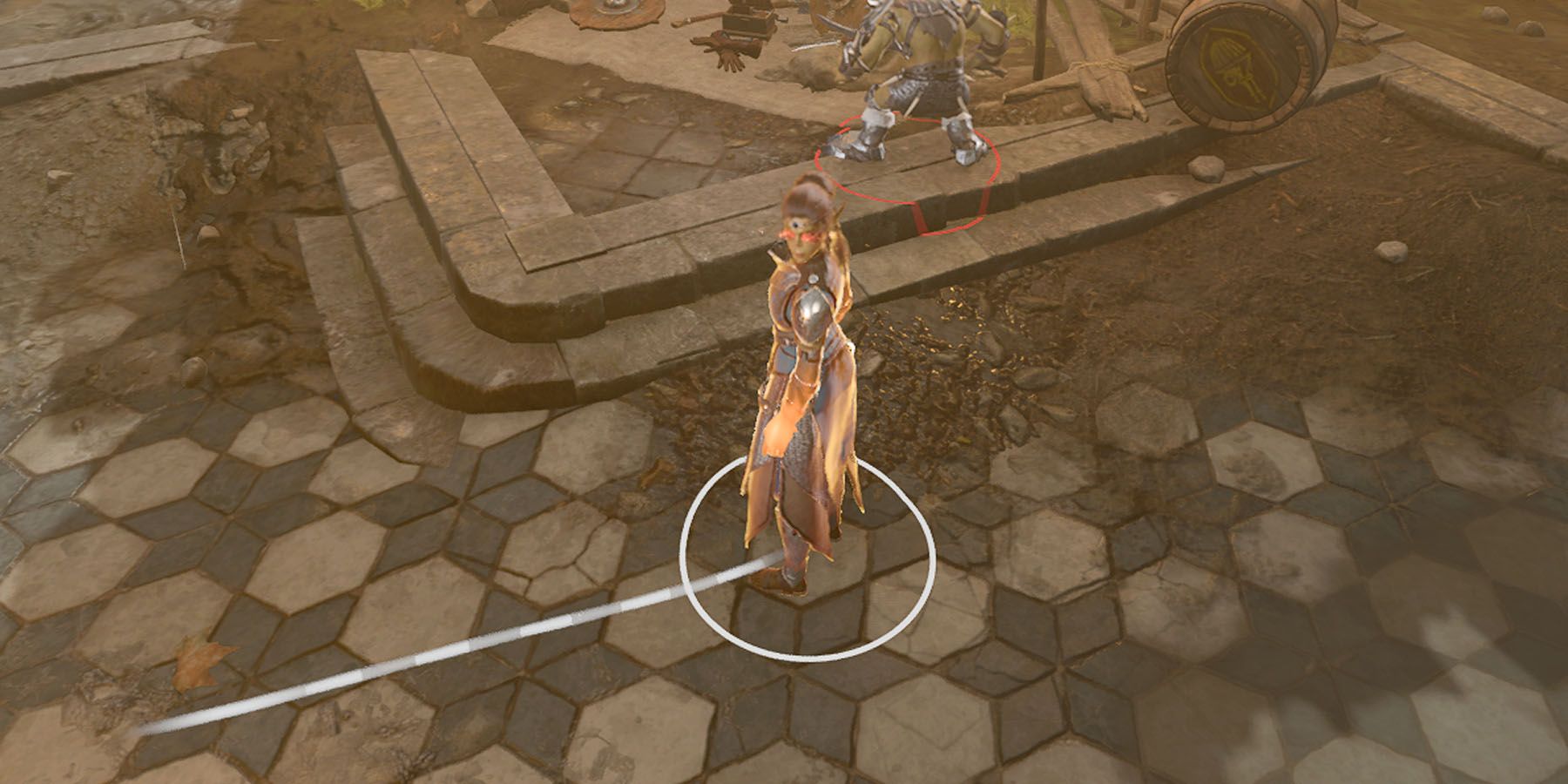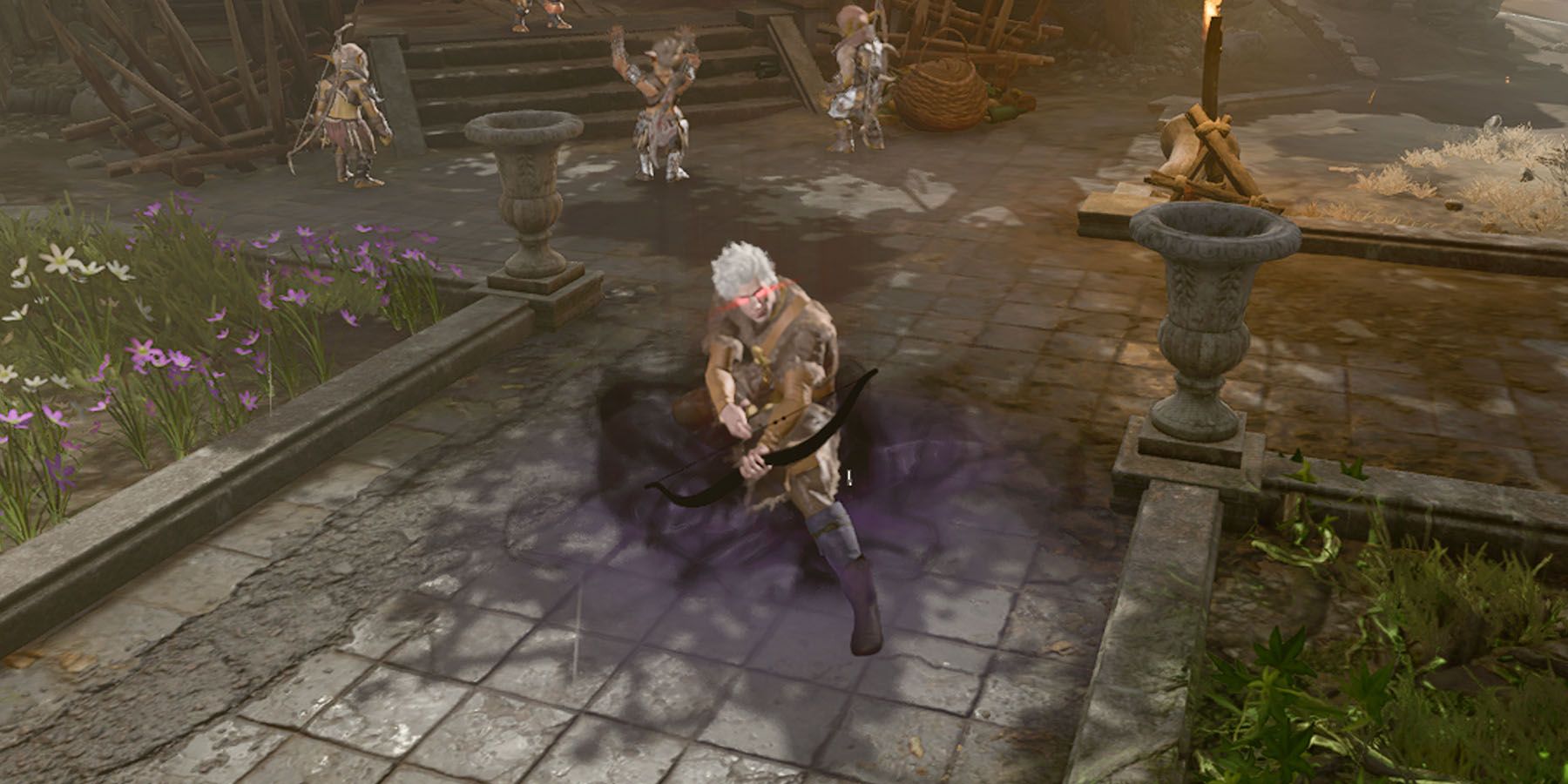Actions form a majority of Baldur’s Gate 3 resource management system when in combat, with this maneuver serving as just one of three things characters could do in each of their turns. Opposing the responsive Reaction and the more free-form Bonus Action, an Action in Baldur’s Gate 3 pertains to a defining movement that players do in their turns. Commonly delegated to an attack, Actions could be spent casting spells, using items, or interacting with the environment.
With Baldur’s Gate 3 boasting a set of basic Actions, armament skills through Weapon Actions, a plethora of Spells, and even Class Features, it’s easy to get lost in analysis paralysis when it comes to choosing what to do in a turn. However, players who want a quick rundown of their best combat options should pay attention to certain Actions, and especially the Class that normally have access to them.
10 Knowledge Of The Ages (Cleric)
Clerics are unique as a Dungeons & Dragons Class as their chosen deity’s realm of control also affects the kind of blessings they receive. Mechanically-speaking, this means a Cleric’s Domain not only determines the Spells they know but also the Channel Divinity Features they receive, with Knowledge of the Ages from the Trickery Cleric being one of the most efficient ones available for use.
When used, Knowledge of the Ages lasts until the Cleric takes a Long Rest. This Channel Divinity Feature allows the Cleric to gain Proficiency in all Skills associated with an Ability, allowing them to be almost just as good in specialists being stealthy (Dexterity), sifting through information (Intelligence), gathering insights (Wisdom), and talking with others (Charisma).
9 Lay On Hands (Paladin)
Among the Classes in Baldur’s Gate 3, only the Paladin and their Lay On Hands can cure others without expending resources such as Spell Slots and Channel Divinity charges. Rather, Paladins have a separate Lay On Hands Charge that increases as they level up, giving them access to a pool of 4/10/20 Hit Points and debuff nullifiers that can affect allies in the same way as Healing Word does.
While not the most efficient healing spell, Lay On Hands works as an emergency heal both inside and outside of combat. Considering how the Paladin is a healer-tank hybrid, Lay On Hands is an aggressive Paladin’s guarantee of a means to heal allies in drastic situations.
8 Arcane Recovery (Wizard)
Thanks to Long Rests and the Camp, players enjoying their Baldur’s Gate 3 characters have a means to roleplay “downtime” in the iconic TTRPG. However, Long Rests and ending the day can drastically affect certain questlines, prematurely ending those running on a strict clock. This caveat forces players to be more careful of their Long Rests, in turn forcing resource-intensive Wizards to be more tactical in their choice of spells.
In crucial moments, Wizards may end up lacking crucial Spell Slots in between combat encounters, potentially making them useless without their aces in the hole. Thanks to Arcane Recovery, such a crisis could be averted. Depending on the Wizard’s level and the charges of Arcane Recovery left, Wizards can recover expended Spell Slots, so they could be used in another encounter.
7 Song Of Rest (Bard)
Among the Classes in D&D, the Bard is considered one of the most versatile. Despite their Class being thematically-inclined towards entertainment, their myriad of abilities do help them in both support and offensive roles, depending on the party’s needs. Song Of Rest proves the Bard’s inclination towards the former, especially with its primary benefit.
When used, Song Of Rest will revitalize both the Bard and their allies as though they have taken a Short Rest. Given how players only have two Short Rests, having an extra equivalent could do wonders should players find themselves finishing unexpected combat encounters.
6 Defensive Flourish (Bard)
When a Bard accesses the College of Swords subclass, their flavor becomes that of a battle-hardened performer. Unlike lorekeepers and entertainers, College of Swords Bards know their way in combat while boasting quite the amazing stories. In any kind of combat scenario, a College of Swords Bard gains access to various Flourishes they could do with their weapons of choice, with Defensive Flourish being the most effective.
Coming in both melee and ranged flavors, Defensive Flourishes are Actions that take the form of a 1d6 Slashing attack. Despite its lackluster attack, this Action shines in its effect. When successful, the Bard gets +4 AC throughout the rest of the round, making them much harder to hit.
5 Divine Smite (Paladin)
Smiting defines the difference between the supportive Cleric and the battle-hardened Fighter, with the Paladin becoming a neat go-between with their slate of straightforward heals on top of a powerful roster of Smites. However, among Smites with different effects, the classic Divine Smite is an ever-reliable damage-dealer for Paladins who want to expend their Spell Slots in an all-out attack.
At its core, a Divine Smite deals 2d8 Radiant Damage on top of their weapon’s original damage value, wherein the 1d8 damage of a Versatile Weapon like a Longsword could make Smites more devastating. When attacking fiends and undead, a Divine Smite also deals an additional 1d8 Radiant Damage. What makes Divine Smite such a must-have move for a Paladin is its risk-free option, as missing an attack with Divine Smite won’t waste their Spell Slot.
4 Action Surge (Fighter)
Despite the base Fighter lacking fancy spells and effects, they remain one of D&D’s most versatile Classes due to their access to a constant stream of Feats on top of combat-flexible subclasses. Their ease of use is exemplified in Baldur’s Gate 3 gameplay, with Weapon Actions benefiting the Fighter as their Weapon Proficiencies now pave way for more special attacks with their preferred weapon. Thanks to Action Surge, Fighters become more efficient in combat, courtesy of yet another Action they can do alongside their original Action and Bonus Action.
With the action economy in Baldur's Gate 3, being able to do yet another Action splits the difference between life and death in critical situations. On top of having the option to attack and retreat via Dash, Fighters can go all out as this Action Surge can give another attack on top of an original Attack Action, an Extra Attack, and a potential Bonus Action off-hand attack.
3 Sneak Attack
Easily one of the Features that make the Rogue an OP Baldur’s Gate 3 Class when properly built, Sneak Attack for both melee and ranged weapons simply require the Class to have any form of Advantage against the target to pull off. At first glance, securing Advantage for the Rogue can be quite tricky, especially if they’re not able to Hide or stealth their way to an opponent’s back. However, this can easily be circumvented via a flank, wherein an ally is within 1.5 meters of the target.
Players who manage to find ways of securing said conditions could dish some of the largest DPS numbers in the game. For instance, a 1st-Level Rogue secures +1d6 of their weapon damage to a Sneak Attack. This increases for every odd-numbered level, totaling +6d6 damage per Sneak Attack at Level 12.
2 Dash (All Classes)
On top of Classes having their own set of special Actions, Bonus Actions, and Reactions, players enjoying the D&D adaptation also have access to a default slate of Actions regardless of their character’s specialization. Chief among them is Dash, an Action that single-handedly helped melee-intensive Classes to get closer to enemies as well as assist ranged specialists to create distance.
With Jump (Bonus Action) covering a small area and spells such as Misty Step (2nd-Level Conjuration) coming at a hefty cost, Dash being a free Action is an invaluable mobility resource. When used properly, Dash can help players set up combos, flee combat, and even rush to an ally’s aid whenever necessary.
1 Help (All Classes)
With Baldur’s Gate 3 gameplay emphasizing tactical approaches to combat, it’s no surprise should a misplaced character get in the way of a lot of hits. Players may encounter their first set of Death Saves within the game’s first few encounters, but it’s nothing a healing spell couldn’t remedy. However, for spellcasters conserving their Spell Slots for important abilities, Help may just be the better tool to save a comrade’s life.
Available to all Classes, Help is easily one of the most important Actions in the game. Characters need to be beside an ally that needs assistance, and this status immediately removes statuses such as Burning, Ensnared, Entangled, Enwebbed, Prone, and Sleeping. More importantly, this instantly restores a Downed ally to 1HP.
Baldur’s Gate 3 is available now for the PC and is slated for a September 6th release for PlayStation 5.

